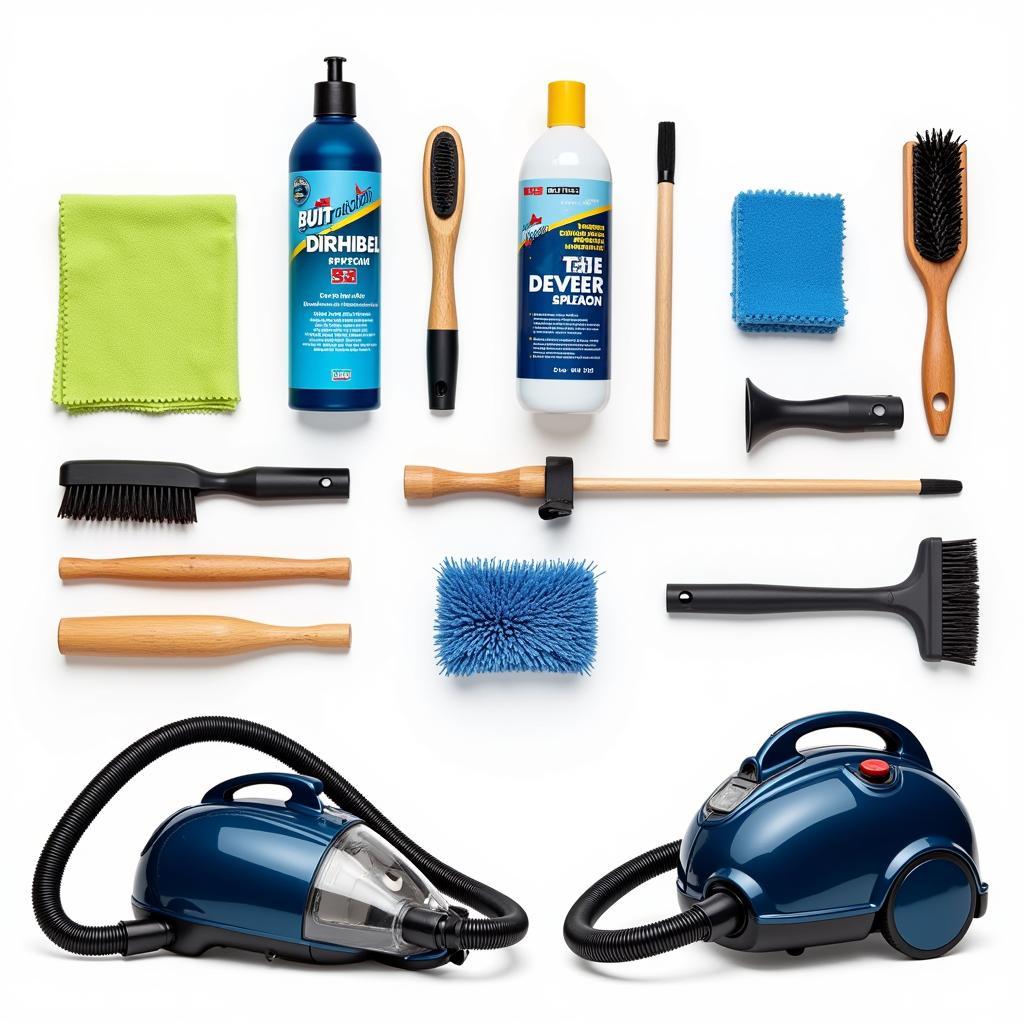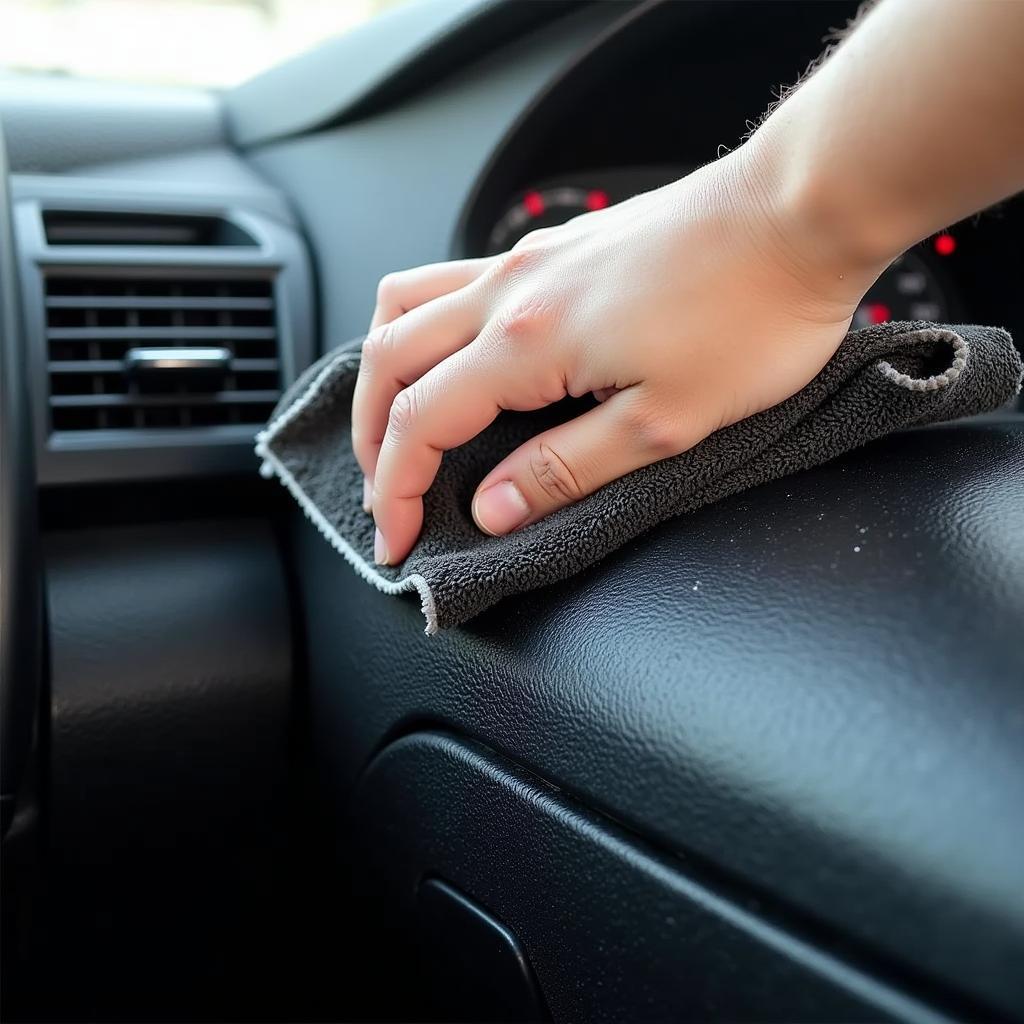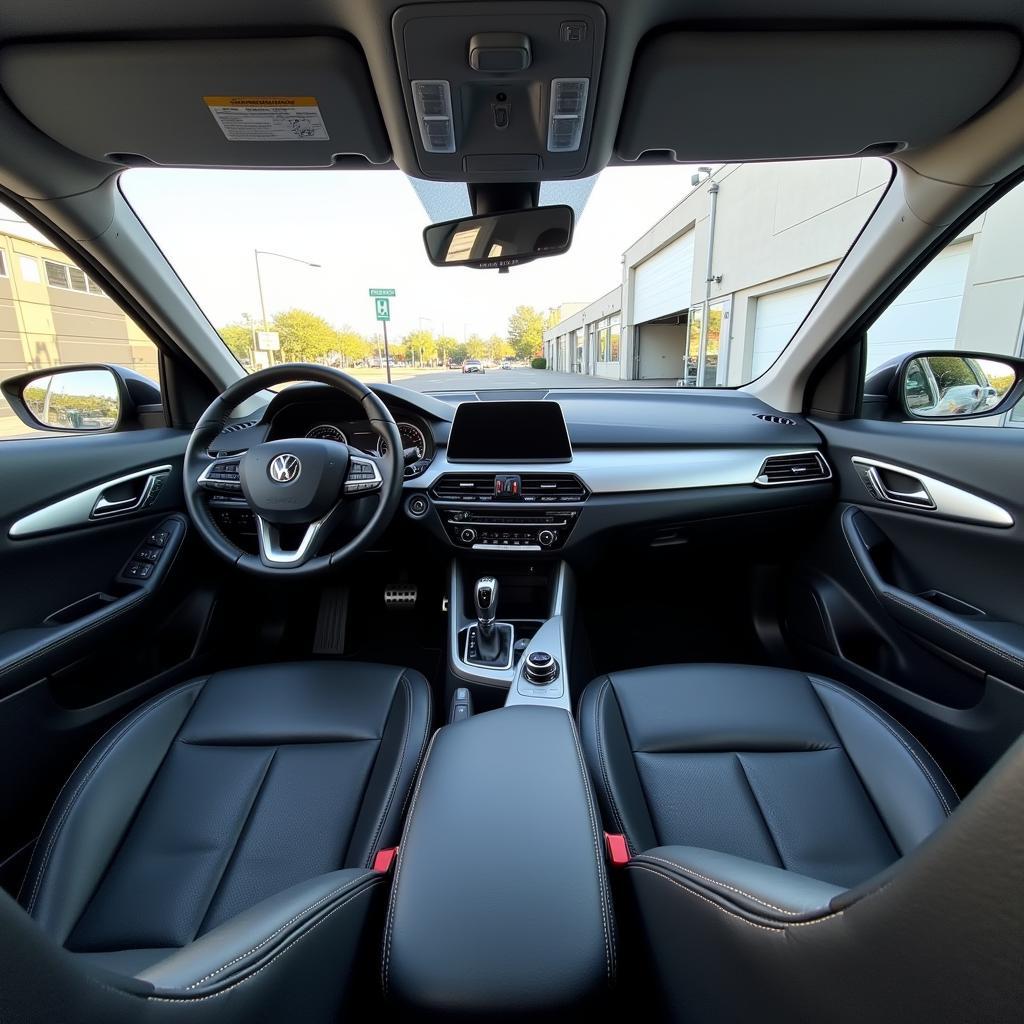Detailing the inside of your car can seem daunting, but with the right approach and a little elbow grease, you can achieve professional-looking results and enjoy a pristine driving environment. This guide will provide a comprehensive step-by-step process on How To Detail The Inside Of Your Car Yourself, saving you money and giving you the satisfaction of a job well done.
Learning how to detail the inside of your car yourself not only enhances your vehicle’s appearance but also contributes to its longevity and resale value. A clean and well-maintained interior creates a more pleasant driving experience and reflects pride in ownership. Plus, who doesn’t love that new car smell? Soon after starting, you may even wonder what services do car detailers provide since you’ll be doing it yourself!
Want to improve your trade-in value? Consider detailing your car before taking it to the dealership. Check out our guide on should you detail car before trading in for more information.
Gathering Your Supplies: The Essentials for a Detailed Interior
Before you dive into the detailing process, ensure you have all the necessary supplies at hand. This will streamline the process and prevent interruptions. You’ll need:
- A Quality Vacuum Cleaner: Invest in a vacuum with various attachments to reach crevices and upholstery effectively.
- Microfiber Cloths: These are essential for cleaning various surfaces without scratching or leaving lint behind.
- Interior Cleaner: Choose a cleaner specifically designed for automotive interiors to avoid damaging delicate materials.
- Leather Cleaner and Conditioner (if applicable): If your car has leather seats, use specialized products to maintain their suppleness and prevent cracking.
- Glass Cleaner: Opt for an ammonia-free glass cleaner to prevent streaks and damage to tinted windows.
- Brushes: Different brush sizes and stiffness will help you clean vents, crevices, and other hard-to-reach areas.
- Detailing Brushes: These smaller brushes are perfect for intricate areas like air vents and around buttons.
- Trash Bags: For collecting all the debris you’ll be removing.
Step-by-Step Guide: How to Detail the Inside of Your Car Yourself
Follow these steps meticulously for a showroom-worthy interior:
- Declutter: Remove all trash, personal belongings, and unnecessary items from your car. This includes the glove compartment, center console, and door pockets.
- Vacuum: Thoroughly vacuum the entire interior, including the seats, carpets, floor mats, and dashboard. Use the crevice tool to reach tight spaces and under the seats.
- Clean the Dashboard and Console: Spray your interior cleaner onto a microfiber cloth and wipe down all surfaces, including the steering wheel, instrument panel, and center console.
- Clean the Seats: Use the appropriate cleaner for your seat material. For cloth seats, apply the cleaner and gently scrub with a brush. For leather seats, use a leather cleaner and conditioner.
- Clean the Door Panels: Wipe down the door panels, paying attention to the armrests and handles.
- Clean the Windows: Spray your glass cleaner onto a microfiber cloth and wipe down all windows, inside and out.
- Detail the Vents and Crevices: Use detailing brushes and cotton swabs to clean air vents, crevices, and other hard-to-reach areas.
- Final Touches: Replace floor mats and add air freshener (optional).
 Essential Car Detailing Supplies for a Pristine Interior
Essential Car Detailing Supplies for a Pristine Interior
Why Detail Your Car’s Interior Yourself?
Taking the time to detail your car’s interior yourself offers several benefits:
- Cost Savings: Professional detailing can be expensive. DIY detailing allows you to achieve similar results at a fraction of the cost.
- Pride of Ownership: There’s a unique satisfaction that comes with meticulously cleaning and detailing your own car.
- Control Over Products: You can choose the products you use, ensuring they are safe for your car’s materials and your own health.
 Meticulously Cleaning a Car’s Dashboard and Interior Surfaces
Meticulously Cleaning a Car’s Dashboard and Interior Surfaces
Common Interior Detailing Questions
What’s the best way to remove pet hair from car upholstery? A rubber glove or a specialized pet hair removal tool can work wonders. Dampen the glove slightly and rub it over the upholstery. The static cling will attract and lift the pet hair.
How do I remove stains from cloth seats? A mixture of baking soda and water can be effective for removing light stains. For tougher stains, consider a dedicated upholstery cleaner. Always test any cleaning solution on an inconspicuous area first.
“Regular interior detailing not only keeps your car looking its best but also preserves the value of its interior materials,” says renowned automotive detailing expert, James Miller. “It’s an investment in both aesthetics and longevity.”
Conclusion: Enjoying the Fruits of Your Labor
By following this guide, you can detail the inside of your car yourself and achieve impressive results. Regular detailing will keep your car looking its best, enhance your driving experience, and protect your investment. If you are interested in learning how to detail the exterior of your car, check out our guide on how to detail a car exterior step by step. Also, if you’re curious about how detailing can affect the price of selling your car, see our article on how much does getting a car detail cost. Finally, for video tutorials on car detailing, explore how to detail a car site youtube.com.
 Spotless Car Interior After a Thorough Detailing Session
Spotless Car Interior After a Thorough Detailing Session
FAQs
- How often should I detail the inside of my car? Ideally, every 3-4 months, or more frequently if needed.
- Can I use household cleaners on my car’s interior? It’s best to use cleaners specifically designed for automotive interiors.
- What’s the best way to protect leather seats? Regularly conditioning your leather seats will help prevent cracking and fading.
- How do I remove sticky residue from the dashboard? Isopropyl alcohol can be effective for removing sticky residue.
- What’s the best way to clean car floor mats? Shake them out, vacuum them, and then scrub them with a brush and all-purpose cleaner.
- How can I prevent my car’s interior from getting dirty quickly? Regularly vacuuming and wiping down surfaces will help prevent dirt and grime buildup.
- What’s the best way to clean the headliner? Use a gentle cleaner and a soft-bristled brush to avoid damaging the delicate fabric.
For further assistance, feel free to reach out to our 24/7 customer support team via WhatsApp: +1(641)206-8880 or Email: [email protected]. We are here to help!

Leave a Reply